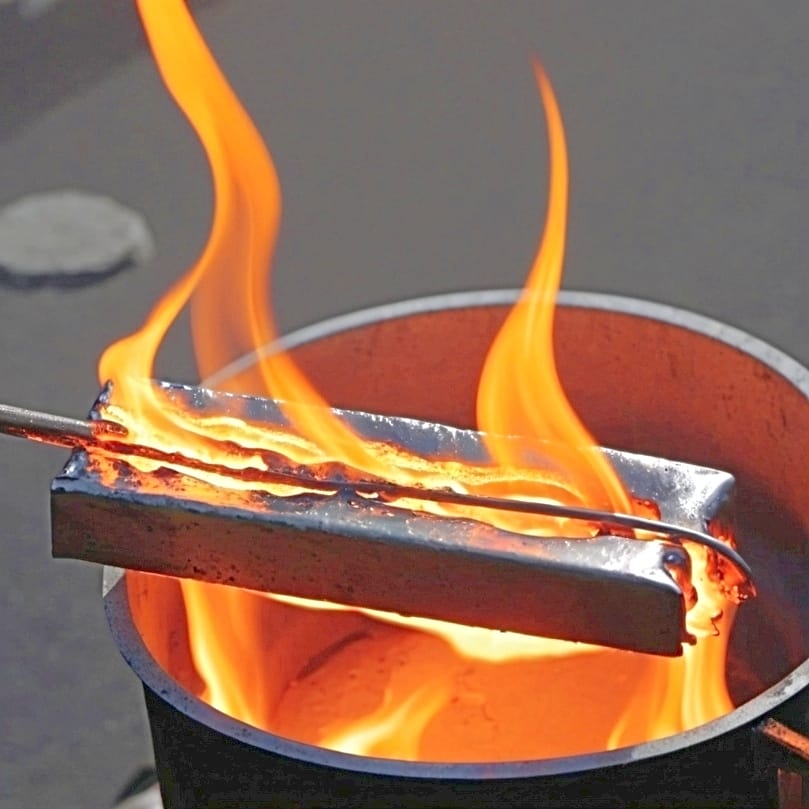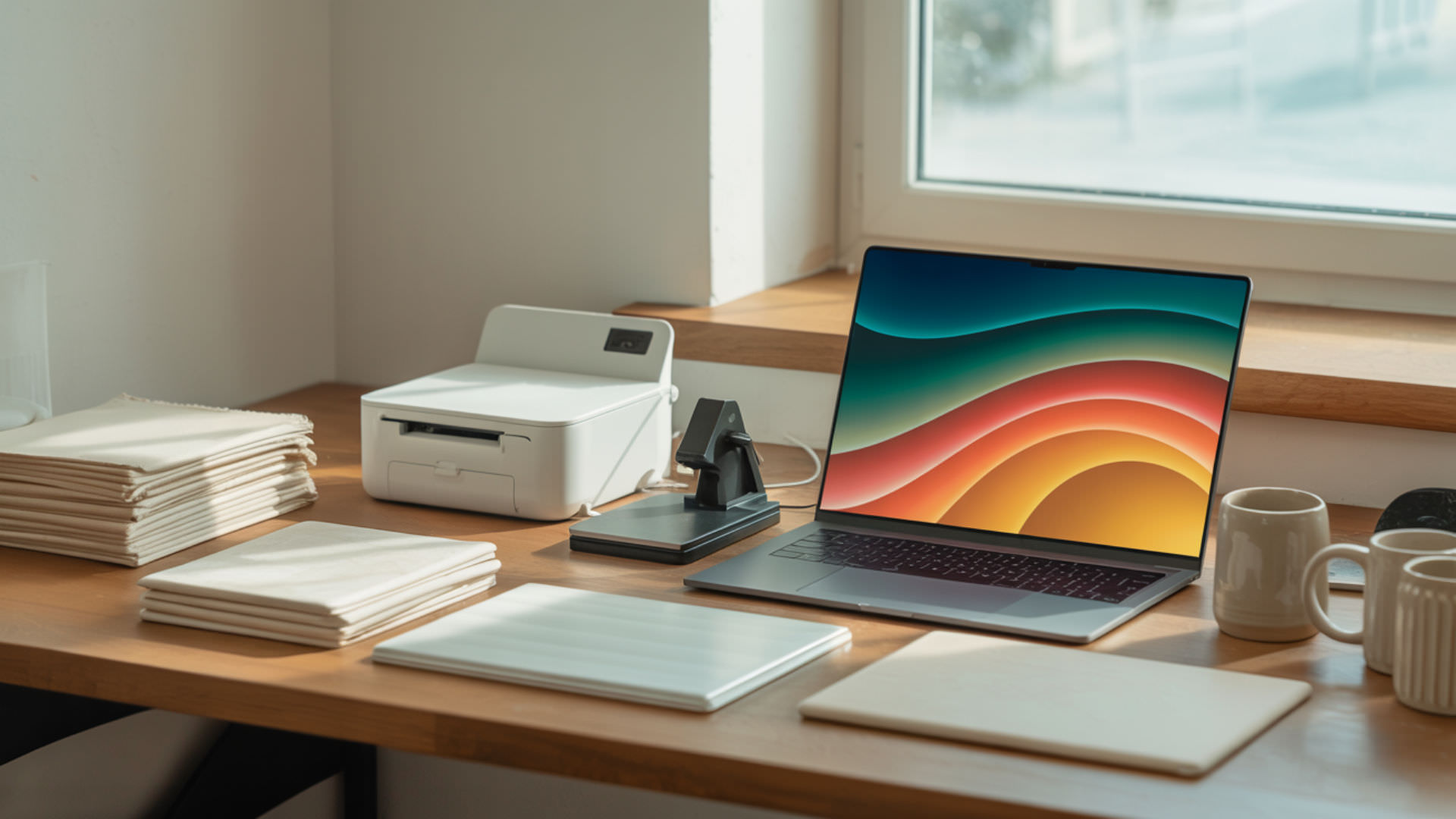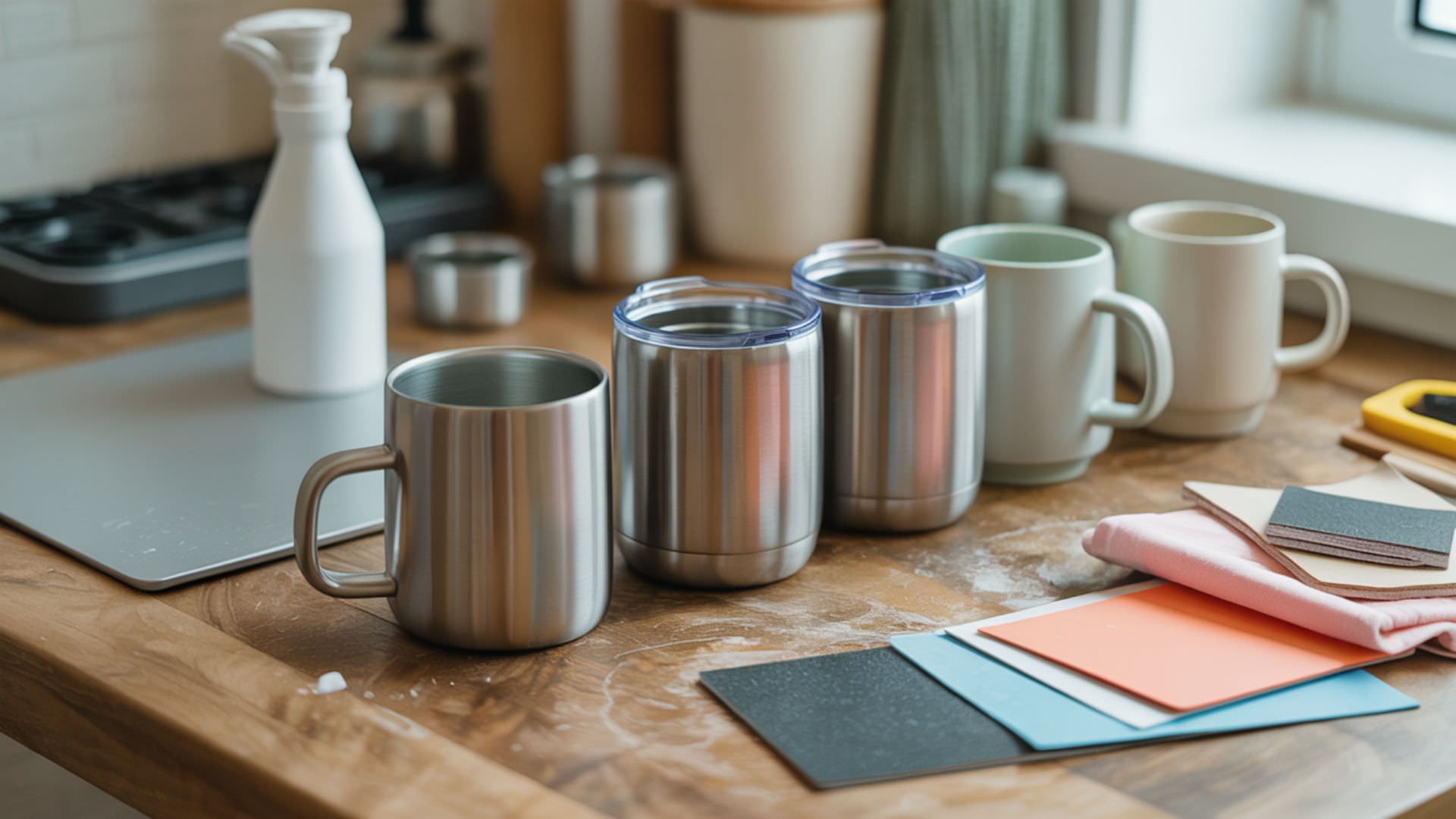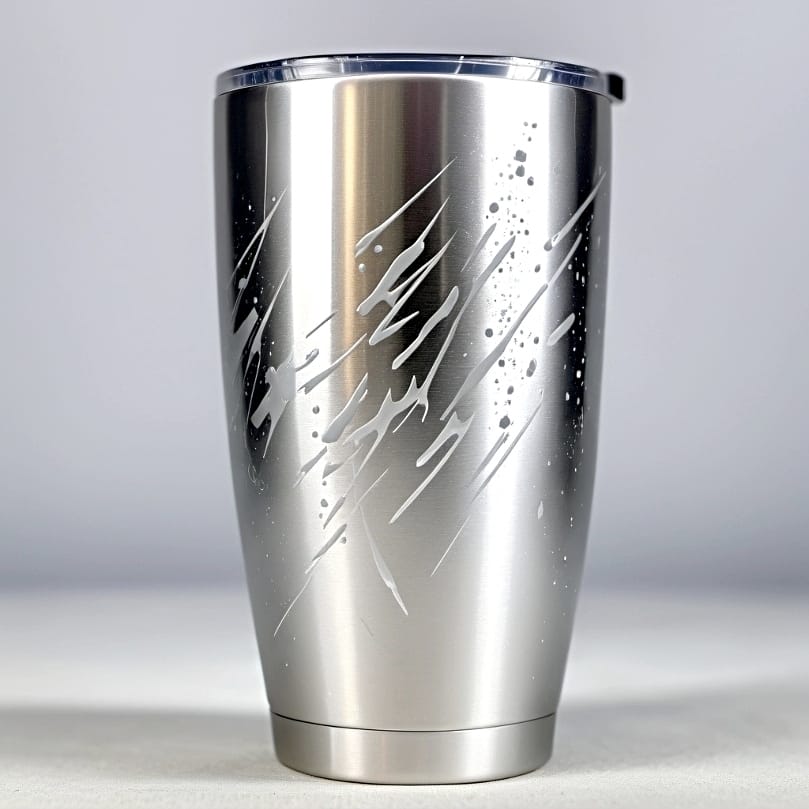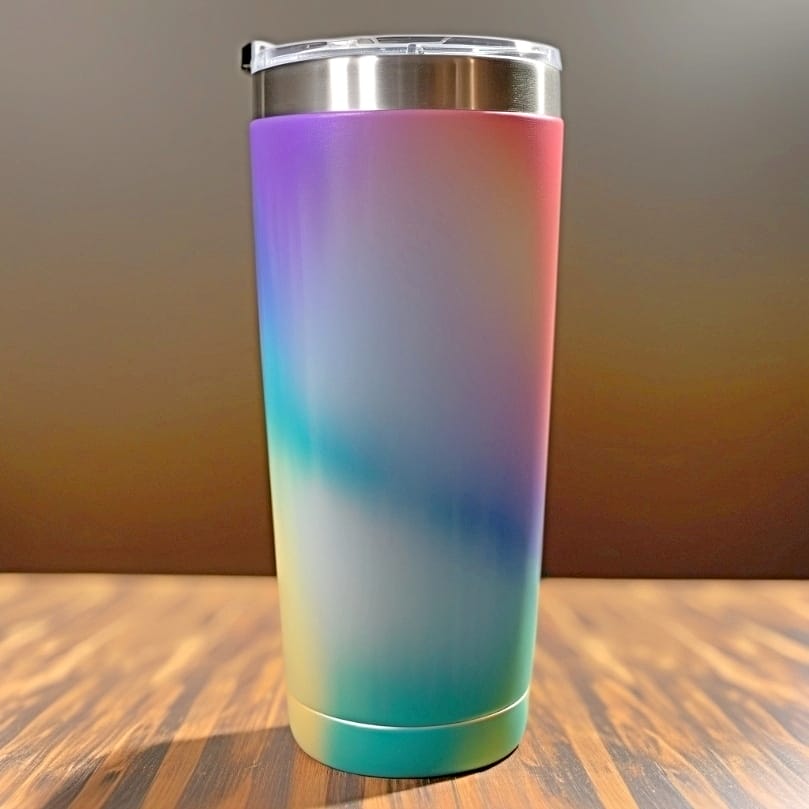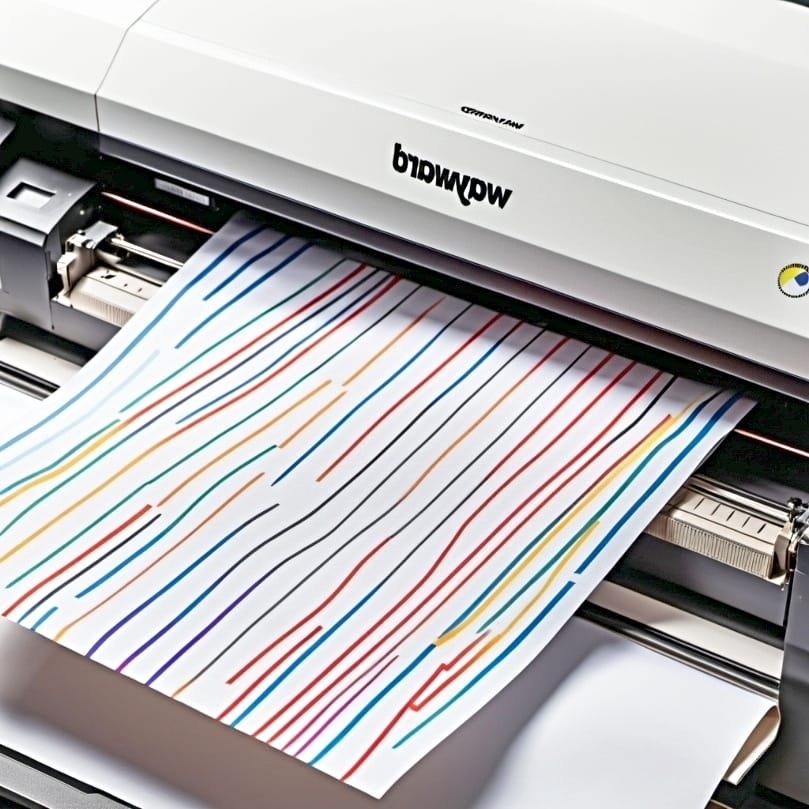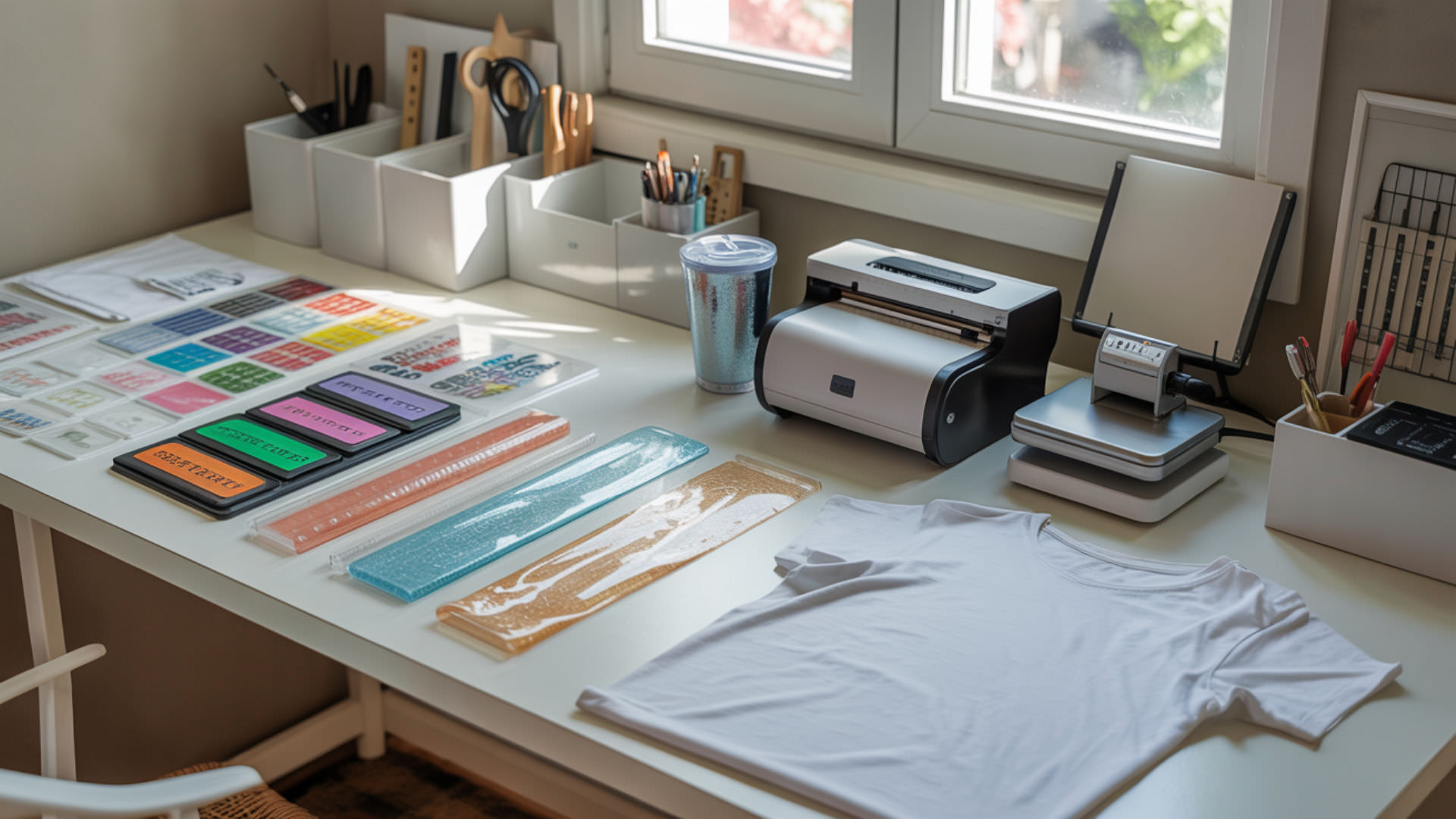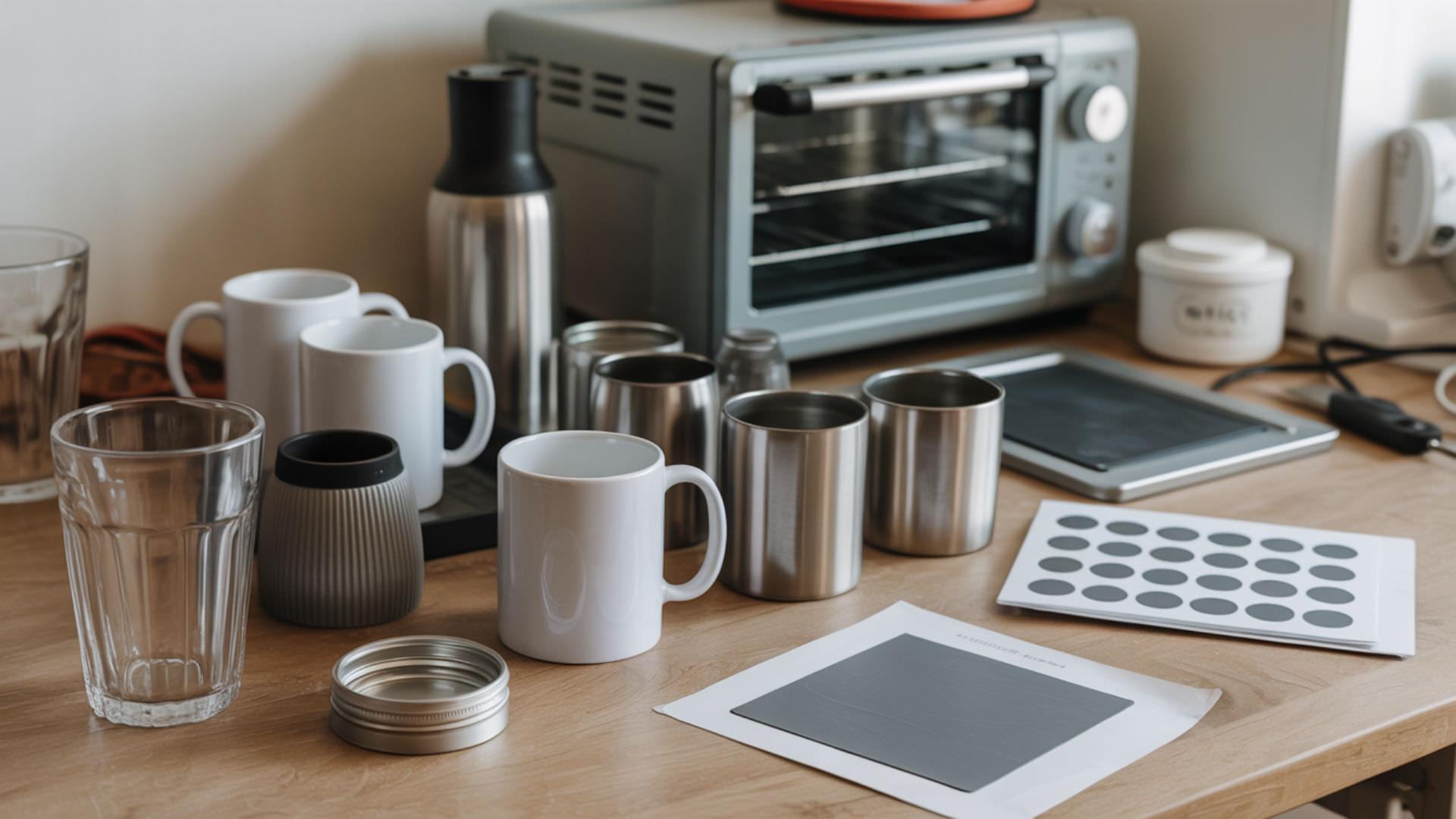Table of Contents
ToggleWhen your shrink wrap turns to goo, sublimation projects can quickly go from exciting to exasperating. If you’re grappling with the question ‘why is my shrink wrap melting sublimation,’ the solutions are right here in front of you! This no-fluff guide zeroes in on the causes of shrink wrap melting and equips you with actionable steps to perfect your sublimation process. Enjoy your sublimation experience!
Key Takeaways
- Shrink wrap melting in sublimation is often caused by excessive heat, poor quality materials, and incorrect settings; high-quality shrink wrap and careful temperature monitoring can prevent melting.
- Proper preparation of materials and adjusting sublimation settings are critical to prevent shrink wrap melting, ensuring the substrate is clean and the settings are suited for the specific material and design.
- Alternative methods such as silicone wraps, Cricut Mug Press, and tumbler presses offer sustainable and consistent heating options for sublimation, eliminating the need for shrink wrap.
Understanding the Shrink Wrap Melting Issue
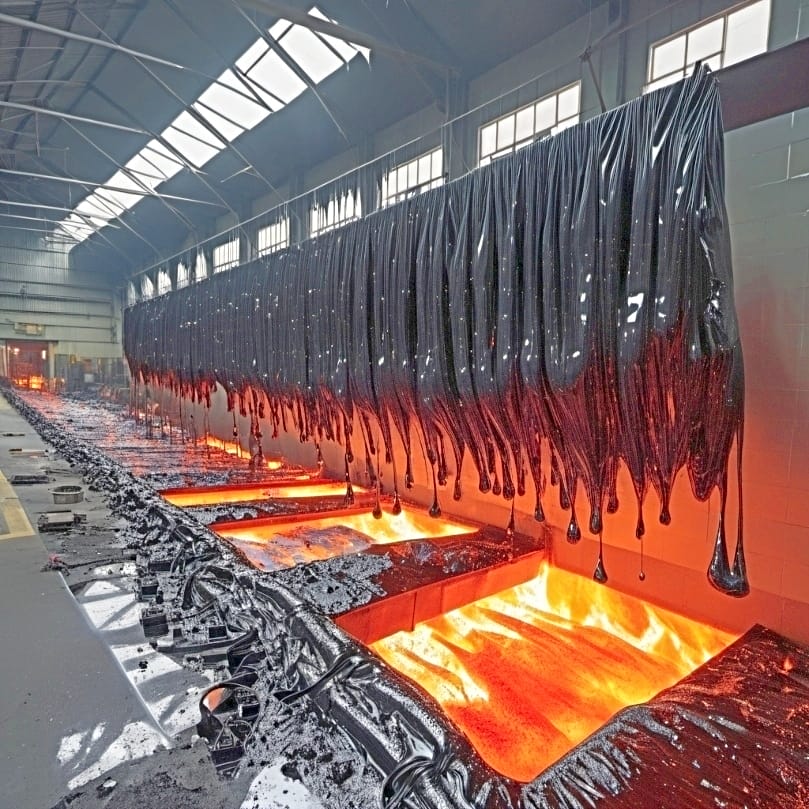
The art of sublimation is a delicate process that requires precision, quality materials, and the right settings. One common issue that many face is shrink wrap melting. This is often due to excessive heat, poor quality wrap, or incorrect settings when working with sublimation blanks. To avoid this problem, always ensure you use a high-quality sublimation blank for your projects.
Understanding these causes helps in preventing damage and ensuring a successful sublimation process. To avoid shrink wrap melting, follow these steps:
- Continuously monitor the wrap throughout the process.
- Adjust temperature or time settings if melting signs appear.
- This practice maintains the integrity of your sublimation shrink wrap and yields a high-quality print transfer.
Heat Exposure
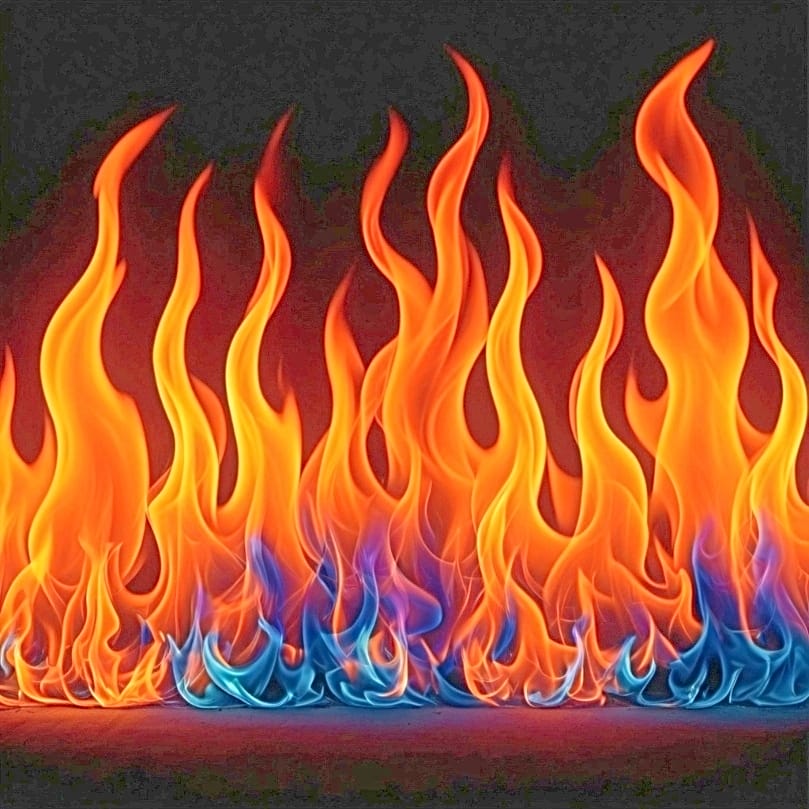
One key factor contributing to shrink wrap melting is heat exposure. It’s no secret that sublimation involves high heat, but when it’s too excessive, it can spell disaster for your shrink wrap. Whether you’re using a heat press, a heat gun, or a convection oven, heat control is of utmost importance.
Remember, not all shrink wraps are created equal. Some may withstand high heat, while others may melt under the pressure. Hence, continuously monitoring the temperature settings becomes crucial to prevent shrink wrap melting. It’s a simple step that can make a world of difference in your sublimation projects.
Poor Quality Shrink Wrap
The quality of your shrink wrap plays a significant role in the success of your sublimation process. Low-quality shrink wrap can lead to uneven heat distribution and potential melting. Just imagine seeing your hard work go down the drain because of poor quality wrap – a heartbreaking sight indeed!
⫸ Click Here For Best Selling Sublimation Printers And Products ⫷The solution? Invest in high-quality shrink wrap, specifically designed for sublimation. This type of sublimation shrink sleeve can withstand the high temperatures of the sublimation process, thereby helping to prevent melting. Remember, what may seem like a small investment now can save you a lot of trouble in the future.
Incorrect Sublimation Settings
Just like baking a cake, sublimation requires the right temperature, time, and pressure settings. Incorrect sublimation settings can lead to shrink wrap melting and a poor quality final product. Hence, adjusting your sublimation settings in accordance with the material and design specifics becomes vital.
Whether you’re working on sublimation tumblers, shirts, or ceramic mugs, each material requires different settings in a sublimation oven. For example, shirts and polyester fabric typically require a temperature of 375°F to 400°F, time of 40 to 75 seconds, and light to medium pressure at 35 to 50 psi. On the other hand, stainless steel tumblers require a temperature range of 360°F to 385°F, with a time of 100+ seconds and medium pressure at 40 psi. Adjusting your sublimation settings to these specific needs is essential to ensure the integrity of the shrink wrap and the quality of the final product. It is good to have an understanding of sublimation related issues such as sublimation tumbler problems and solutions.
Tips for Preventing Shrink Wrap Melting

Now that we’ve understood the common causes of shrink wrap melting, it’s time to learn how to prevent this from happening. Preventing shrink wrap melting revolves around three main strategies: choosing the right shrink wrap, properly preparing materials, and adjusting sublimation settings.
While these strategies may appear simple, they considerably impact the success of your sublimation process. Each step, from choosing high-quality shrink wrap to perfecting your sublimation settings, plays a significant role in preventing shrink wrap from melting. Keep in mind, even minute details can greatly affect the final outcome.
Choosing the Right Shrink Wrap
Choosing the right shrink wrap is all about its quality and compatibility with the sublimation process. Start by selecting shrink wrap that:
- Can withstand typical sublimation temperatures around 400° F without melting
- Is specifically designed for sublimation
- Has a high shrink ratio for a tight and professional finish
Remember, not all shrink wraps, including shrink wrap sleeves, are created equal, and the right one can make all the difference, just like choosing the right shrink gun for the job.
Consider the thickness of your shrink wrap, as it contributes to its ability to resist heat and avoid melting under sublimation conditions. A high-quality shrink wrap ensures even heat distribution, thereby affecting the consistency of the sublimation print transfer onto the substrate. Moreover, using shrink wrap designed specifically for sublimation will reduce the risk of melting or tearing, protecting the substrate and design.
To achieve a smooth and consistent sublimation print, the shrink wrap needs to shrink evenly around the item being sublimated.
Proper Preparation of Materials

Another key step in preventing shrink wrap melting is the proper preparation of materials. This involves ensuring that your substrate, whether it’s a tumbler, a mug, or a t-shirt, is thoroughly cleaned and prepped. Remember, even a speck of dust can affect the quality of your sublimation print.
When it comes to shrink wrap and shrink film, proper sizing is key. The shrink wrap should conform to the shape of the substrate, reducing the risk of melting. It’s also important to use heat-resistant tape to securely attach the transfer sheet, preventing the shrink wrap from moving and melting during the sublimation process.
Adjusting Sublimation Settings
Having the right sublimation settings is fundamental to the success of your sublimation project. With appropriate settings, it’s possible to prevent shrink wrap melting and guarantee a high-quality end product.
Firstly, remember to use an oven thermometer to ensure the oven temperature is accurate and does not exceed recommended levels for the material. It’s also advisable to fine-tune the pressure settings on the heat press to match the substrate’s thickness and type.
Most importantly, consult the manufacturer’s instructions and conduct sublimation test prints to adjust the temperature, time, and pressure based on the specific material and design being used.
Alternative Methods for Sublimation
While shrink wrap is commonly used in sublimation, it’s not the only method available. There are several alternative methods that can help you avoid shrink wrap melting issues while ensuring high-quality sublimation prints. These include using silicone wraps, Cricut Mug Press, and tumbler presses.
These alternatives offer distinct advantages over traditional shrink wrap, from being more sustainable to providing more controlled and consistent heating. Let’s delve into these alternative methods and explore how they can enhance your sublimation process.
Silicone Wraps
Silicone wrap sleeves serve as a fantastic alternative to shrink wrap for sublimating mugs and tumblers. Designed to hold sublimation paper tightly against the mug or tumbler during the heating process, they ensure a smooth and consistent transfer of the design.
One of the best things about silicone wraps is their sustainability. Unlike shrink wrap, which is single-use, silicone wraps can be reused multiple times. They are also available in different sizes to fit a variety of mug and tumbler dimensions, making them a versatile tool in your sublimation arsenal.[1]
Cricut Mug Press
Introducing the Cricut Mug Press – a specialized tool that simplifies the sublimation process for mugs without using shrink wrap. The Cricut Mug Press is designed for simplicity, featuring a built-in timer that indicates the completion of the sublimation process.
The Cricut Mug Press is not limited to Cricut Infusible Ink. It is compatible with regular sublimation prints, accommodating a wide array of colors, intricate designs, photos, gradients, patterns, and detailed graphics. To achieve effective sublimation using the Cricut Mug Press, mugs must have a special poly coating and straight walls to ensure even pressure and proper image transfer.
Tumbler Press

Last but not least, let’s talk about the Tumbler Press. This is a specialized machine used for sublimating designs onto tumblers, providing a method that doesn’t require shrink wrap.
Tumbler presses offer several advantages over traditional shrink wrap sublimation. Here are some of the benefits:
- User-friendly
- Affordable
- Provide more controlled and consistent heating
- Compact design, suitable for users with limited space
- Can transfer intricate designs onto tumblers of various sizes, expanding the creative possibilities in sublimation printing.
Troubleshooting Common Sublimation Issues
Despite your best efforts, sometimes things can go awry in the world of sublimation. But don’t worry, we’ve got you covered! This section provides troubleshooting tips for common sublimation issues, such as uneven pressure, debris and thickness, and wrinkles and bubbles.
Armed with these tips, you can confidently address any arising issues. Keep in mind, sublimation is a process, and each challenge offers a learning opportunity. Now, let’s explore these troubleshooting tips!
Uneven Pressure
Uneven pressure during sublimation can cause hot spots that may result in the shrink wrap melting at localized points. This can disrupt the quality of your sublimation print and cause unexpected issues.
Applying moderate to heavy pressure during sublimation helps achieve even pressure distribution, prevent melting, and ensure superior image transfer. Also, keep in mind that excessive pressure on the heat press can increase heat exposure on the shrink wrap, potentially leading to melting.
Debris and Thickness
Debris on the substrate or heat press can cause imperfections in the sublimation transfer, leading to a flawed final product. Hence, it’s vital to have your sublimation materials and equipment clean before initiating the process.
Using a clean, lint-free cloth to wipe down the substrate and the heat press before sublimation can help prevent debris-related issues. It’s also a good idea to handle the sublimation paper with clean hands to ensure it’s free from dust and other debris that could affect the quality of the final print.
Wrinkles and Bubbles

Wrinkles and bubbles are the nemesis of a flawless sublimation print. They can form when the shrink wrap is not applied evenly and snugly around the substrate. Such imperfections can disrupt the heat transfer process, leading to an undesirable final product.
To avoid wrinkles and bubbles when using shrink wrap for sublimation, follow these steps:
- Pre-press the shrink wrap before the sublimation process.
- Pre-shrink the shrink wrap with a heat gun.
- After the sublimation process, let the item cool down to allow the shrink wrap to contract properly.
Following these steps will ensure a smoother application and a more even heat distribution, reducing the chances of wrinkles or bubbles forming.
Summary
In conclusion, preventing shrink wrap melting during sublimation is a matter of understanding the root causes, implementing preventive measures, and exploring alternative methods. Whether it’s choosing the right shrink wrap, adjusting the sublimation settings, or troubleshooting common issues, each step plays a crucial role in ensuring a successful sublimation process. So, go ahead, apply these tips, and take your sublimation projects to new heights!
Frequently Asked Questions
Why does my shrink wrap melt?
To prevent your shrink wrap from melting, reduce your heat settings and use vent hole film to allow air to escape after the wrap is applied. These steps can help avoid excessive heat and potential melting of the shrink film.[2]
What happens if you overheat sublimation?
Overheating sublimation can lead to issues such as color shifting, scorching, or burning of the substrate, and damage to the sublimation paper. Be cautious about the temperature when using sublimation.
Can you use regular shrink wrap for sublimation?
Yes, regular shrink wrap can be used for sublimation, and it is the most common type of sublimation wrap for tumblers. It is also the cheapest and easiest to use. Don’t miss our guide on removing tape marks from tumblers used for sublimation.
Why is my shrink wrap bubbling?
Your shrink wrap may be bubbling because there are too few perforations in the film, which can trap air inside and make it difficult to stack products. This can also lead to shrink film burnouts and unsightly holes. Try using shrink wrap with more perforations to prevent this issue.
How can I prevent shrink wrap from melting during sublimation?
To prevent shrink wrap from melting during sublimation, select the appropriate shrink wrap, prepare materials correctly, and adjust the sublimation settings accordingly.
References
- The Editors of Encyclopaedia Britannica. (2024, January 8). Silicone | Definition, Composition, Properties, Uses, & Facts. Encyclopedia Britannica. https://www.britannica.com/science/silicone
- Pak, Q. (2024, January 2). Shrink film problems and how to avoid them. https://www.linkedin.com/pulse/shrink-film-problems-how-avoid-them-quick-pak-oafye/?trk=public_post

